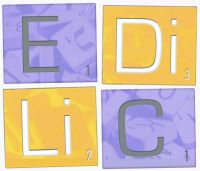Speakers
Description
The paper presents the outcomes of two workshops conducted at the ECML during a network meeting within the project “A toolkit for implementing integrated didactics in language education”, with experts in the field of language education from all over Europe.
The first workshop focused on the possibility of adapting existing Integrated Didactics materials available on ECML's website to suit the local contexts of workshop participants. The definition of Integrated Didactics formulated by the project team and its relation to the definitions existing in the literature were discussed, as well as the criteria that integrated didactic tasks and activities should comply with (Candelier et al., 2012; Candelier M. & Manno, 2023).
PThe participants were presented with selected plurilingual activities and asked to assess them in terms of their compliance with the above-mentioned criteria. Possible ways of adapting the activities to suit local contexts were discussed. Examples of integrated didactic tasks aimed at secondary school students, made use of during an Integrated Didactics course for pre-service teachers of tertiary languages at a teacher training centre at a Polish university, were also presented (Sielanko-Byford and Zielińska, 2024).
The second workshop explored the particularities of Integrated Didactics in the context of educating migrant pupils (Cook, 2001). Since Integrated Didactics exploits learners’ full linguistic repertoires during the learning process, this approach is particularly well-suited for multilingual classrooms with students from different backgrounds (Heckmann, 2008; Cummins, 2009). Workshop participants were invited to reflect on ways of adapting existing ECML activities to the specific needs of migrants in their national contexts.
The paper discusses the suggested adaptations of ECML activities and workshop participants' comments and reflections, as well as the insights gained from them. It presents conclusions reached after conducting the workshops and implications for further work in the development and design of Integrated Didactics materials.
References
Candelier, M., Camilleri-Grima, A., Castellotti, V., de Pietro, J., Lőrincz,, l., Meißner, F., Noguerol, A., & Schröder-Sura, A. (2012). FREPA. A Framework of Reference for Pluralistic Approaches to Languages and Cultures. Competence and Resources. Council of Europe Publishing.
Candelier M. & Manno G. (dir.) (2023). La didactique intégrée des langues - Apprendre une langue avec d’autres langues ? ADEB.
Cook, V. (2001). Using the first language in the classroom. Canadian Modern Language Review, 57, 402-423.
Cummins, J. (2009). Multilingualism in the English-language classroom: Pedagogical considerations. TESOL quarterly, 43(2), 317-321.
Heckmann, F. (2008). Education and Migration. Strategies for integrating migrant children in European schools and societies. European Commission, Education and Culture DG.
Sielanko-Byford, E., & Zielińska, J. (2024). Promowanie różnorodności językowej i kulturowej w kształceniu nauczycieli języków obcych – dobre praktyki i skuteczne rozwiązania. Neofilolog, (62/1), 139–154.
Content/contenu/Inhalt 2
Cet article présente les résultats de deux ateliers organisés au CELV dans le cadre du projet « Une boîte à outils pour la mise en œuvre de la didactique intégrée dans l'éducation aux langues », avec des experts venant de toute l'Europe.
Le premier atelier s'est concentré sue l’adaptation de supports de didactique intégrée (DI) disponibles sur le site web du CELV aux contextes locaux. La définition de DI formulée par l'équipe du projet et sa relation avec les définitions existantes ont été discutées, ainsi que les critères auxquels les tâches et activités de DI devraient se conformer (Candelier et al., 2012 ; Candelier M. & Manno, 2023). Les participants ont analysé et évalué des activités de DI par rapport à leur conformité aux critères susmentionnés. Des exemples de tâches en DI destinées aux élèves de l'enseignement secondaire, développées lors d’un cours destiné aux enseignants de langues vivantes en formation initiale dans le centre de formation d'une université polonaise, ont également été présentés (Sielanko-Byford et Zielińska, 2024).
Le deuxième atelier a exploré les particularités de la DI dans le contexte de l'éducation des élèves migrants (Cook 2001). Étant donné que la DI exploite l'ensemble du répertoire linguistique des apprenants au cours du processus d'apprentissage, cette approche est particulièrement bien adaptée aux classes multilingues composées d'élèves issus de milieux différents (Heckmann 2008, Cummins 2009). Les participants à l'atelier ont été invités à réfléchir aux moyens d'adapter les activités existantes du CELV aux besoins spécifiques des migrants dans leurs contextes nationaux.
Cette communication examine les adaptations proposées, les commentaires et réflexions des participants aux deux ateliers, ainsi que les enseignements qui en ont été tirés. Il présente les conclusions tirées de l'organisation des ateliers et les implications pour la poursuite du travail de développement et de conception de matériel en DI.
| Only for symposia / Seulement pour symposiums / Nur für Symposien | Implementing integrated didactics in language education |
|---|---|
| Title/ titre/Titel 2 | Adaptation des supports de didactique intégrée aux contextes locaux et aux besoins des élèves migrants |

